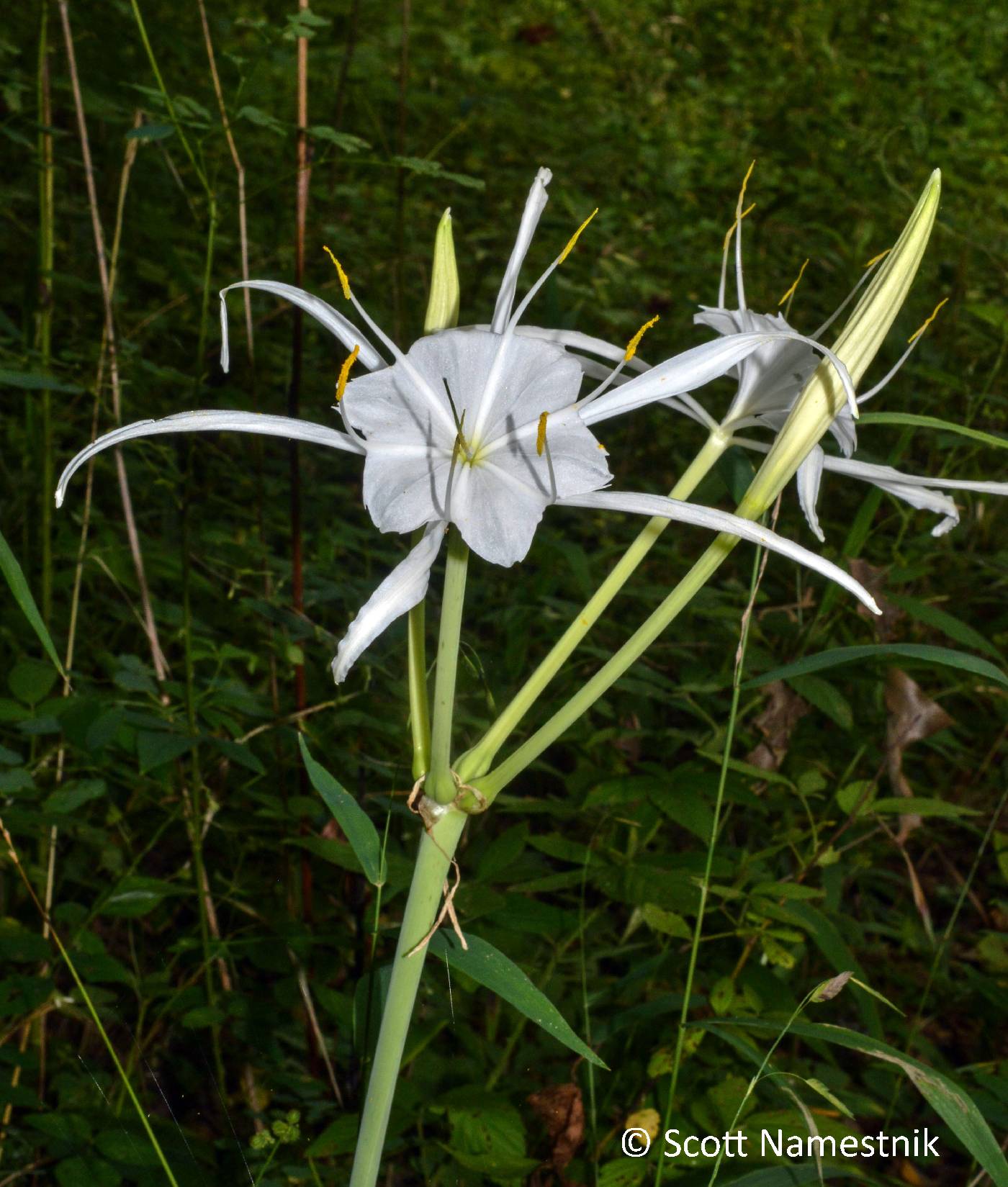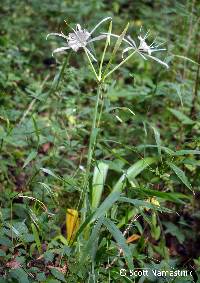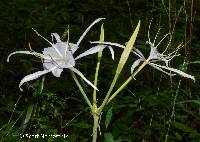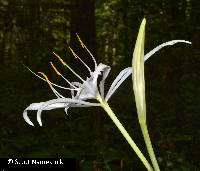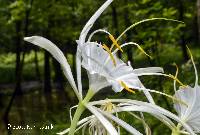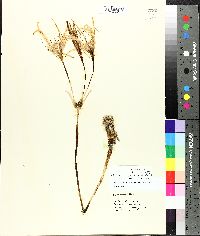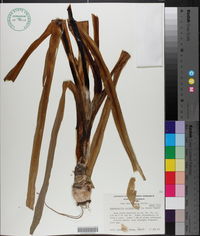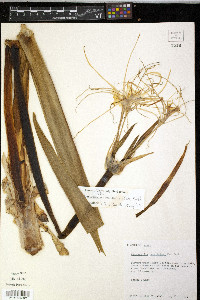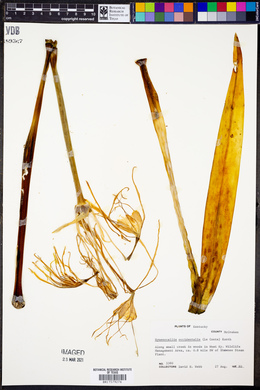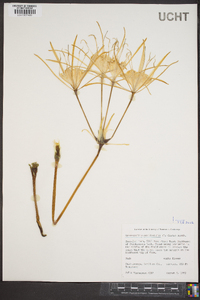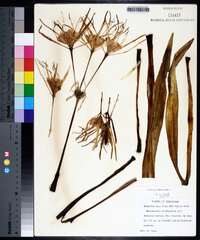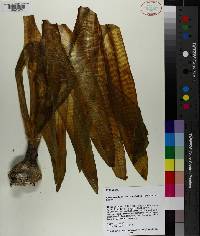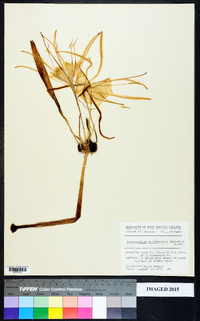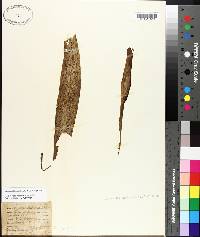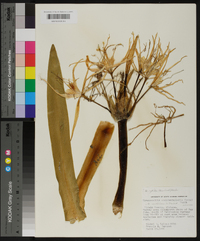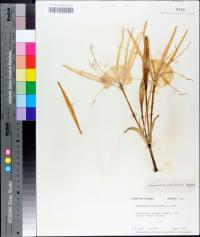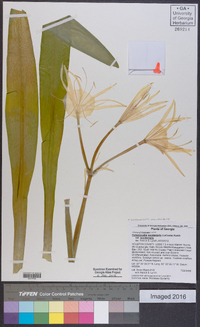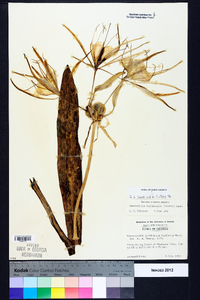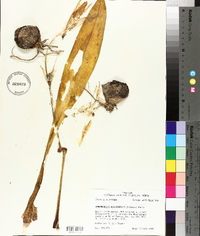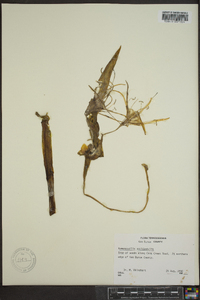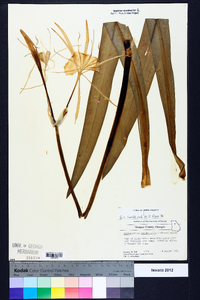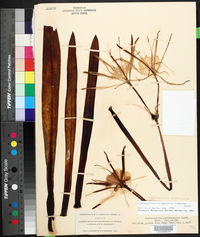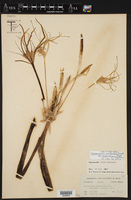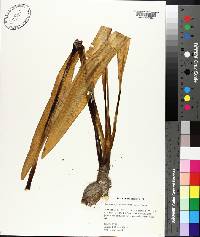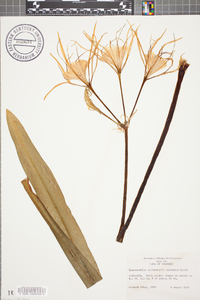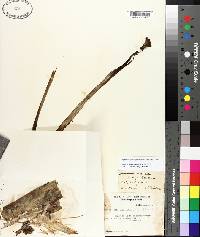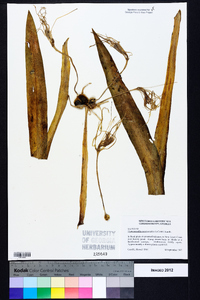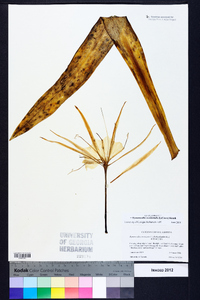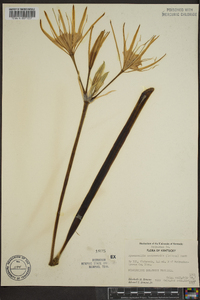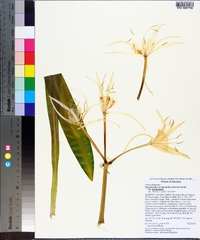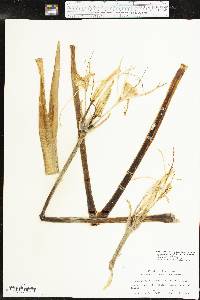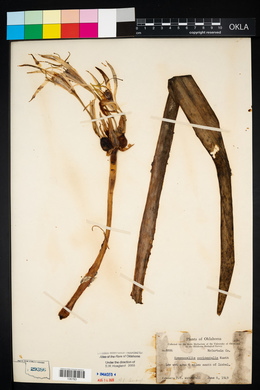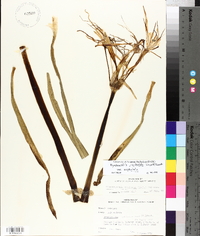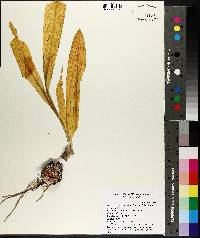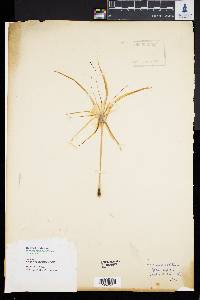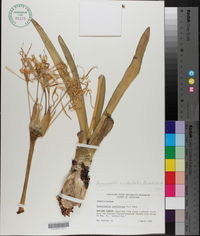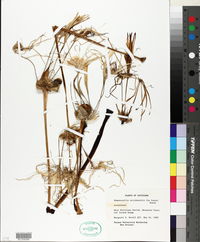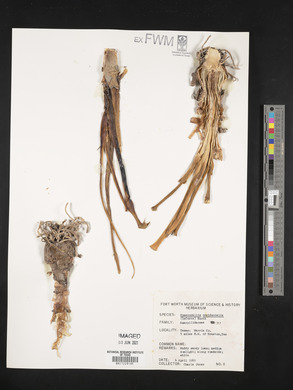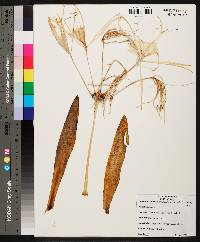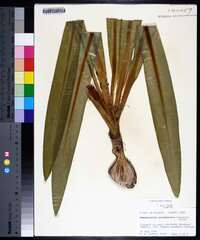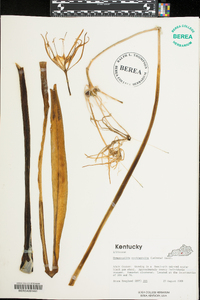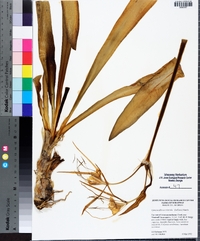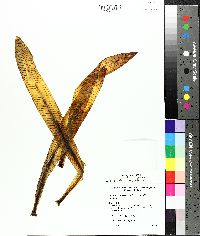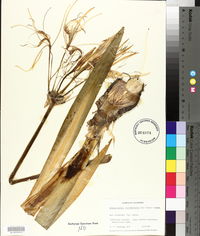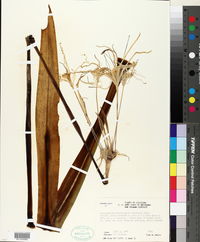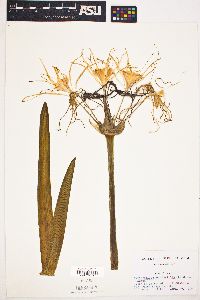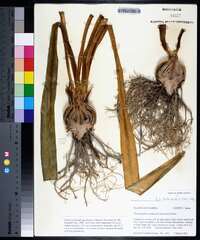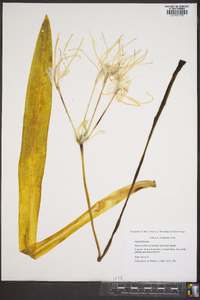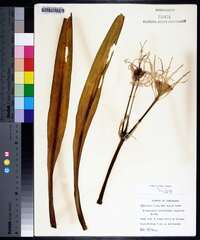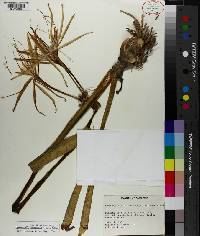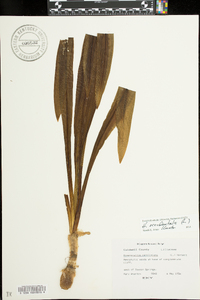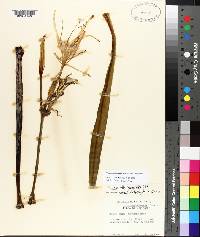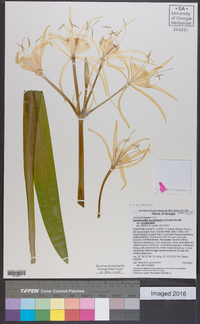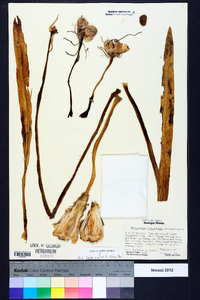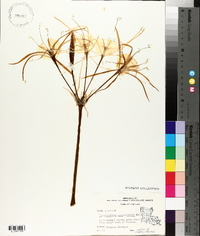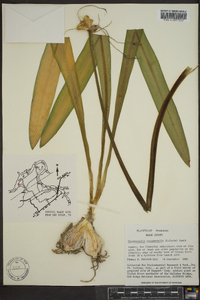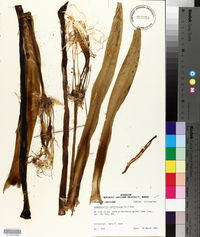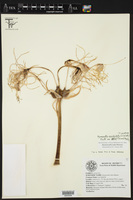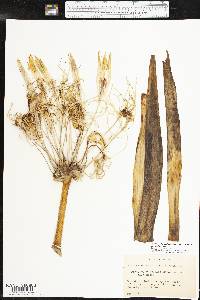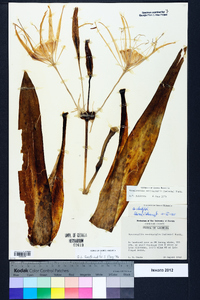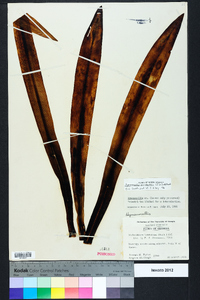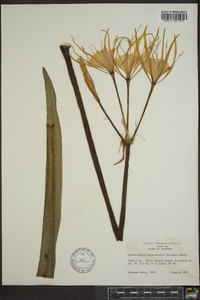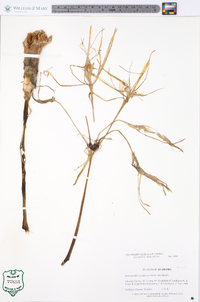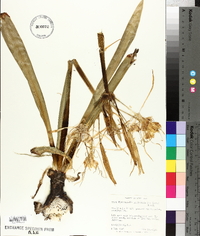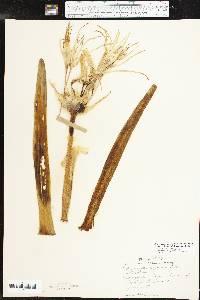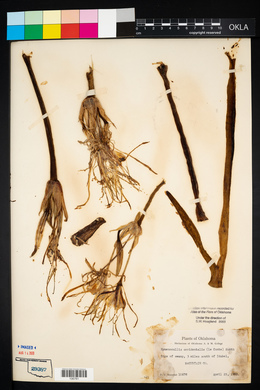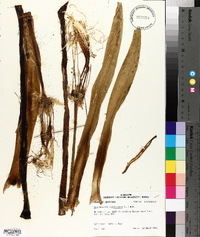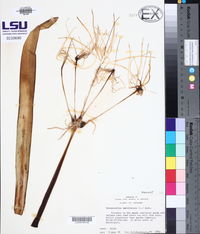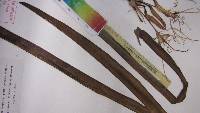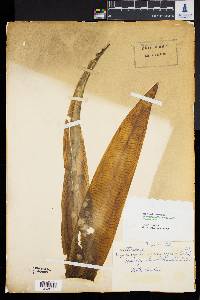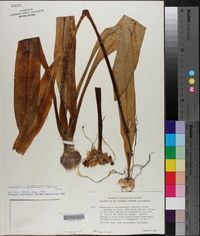
|
|
|
|
Family: Amaryllidaceae
Carolina Spider-Lily
|
Bulb nonrhizomatous, globose, 3.5-5.5 × 3-4.5 cm; basal plate 1-3 cm; neck 1.5-4 cm; tunic dark brown. Leaves deciduous, 5-12, arching to suberect, 3.5-6 dm × 2-6 cm, noncoriaceous; blade oblanceolate, shallowly channeled, distinctly wider beyond middle, tapering to petiolelike base, glaucous when young, apex subacute to acute. Scape (4-)5-7 dm, 2-edged, glaucous; scape bracts 2, enclosing buds, 4-7 × 1-1.5 cm, apex long-acuminate; subtending floral bracts 2.5-4.5 cm × 5-10 mm. Flowers 3-9, opening sequentially, with heavy, sweet fragrance; perianth tube green, slender, 7-13.5 cm; tepals slightly ascending, white, green-striped on keel, (7-) 8.5-11.5 cm × 5-10 mm; corona white with small, yellowish green eye, funnelform, shortly tubulose proximally, 2.5-4(-4.5) × 4-5.5 cm, margins between free portions of filaments often irregularly 3-dentate; free portions of filaments inserted on flat sinal base, nearly erect, white, 2.5-4 cm; anthers 1.3-2 cm, pollen golden; ovary ovoid, 0.8-1.5 cm × 4-7 mm, ovules 2-3 per locule; style green in distal 1/3, fading into white proximally, 13-23 cm. Capsules broadly triangular to subglobose, ca. 2.5 × 2 cm. Seeds subglobose, 1.5-2.1 × 1.2-1.6 cm. Hymenocallis occidentalis var. occidentalis has a long history of cultivation in southern gardens. It is unique in that it grows well in upland mesic forests, sometimes a considerable distance from a river or stream. In southern hammocks, its glaucous leaves appear in midwinter, long before flowering. Flowering may occur as soon as early July in northern Florida but is more usual in late July, August, and September. A single scape will often bear 4-9 flowers, producing an impressive display. Distinctive features are the glaucous, oblanceolate leaves; lanceolate bracts with long-acuminate apex; long, slender perianth tube; and funnelform corona with distinctly dentate margin between the free portions of filaments. This variety is the most widely distributed spider-lily taxon (G. L. Smith et al. 1993) and is the hardiest member of the genus. For over 40 years, a collection made by the late Mary G. Henry near Evergreen, Alabama, has put on an annual, prolific floral display in late August/September at the Henry Foundation´s southern garden in Gladwyne, Pennsylvania. Plants of Hymenocallis occidentalis often have been identified as H. caroliniana (Linnaeus) Herbert on herbarium sheets and in floras. However, the latter name is based on Pancratium carolinianum Linnaeus, and its type, as drawn by Catesby, is clearly P. maritimum Linnaeus.
From Flora of Indiana (1940) by Charles C. Deam The spiderlily grows in low woodland that is usually inundated each year and in soil which is comparatively free from organic matter and which becomes very hard during the summer months. The bulbs are usually 6-9 inches below the surface in a compact, blue clay. It is rather frequent in the southern part of Posey County where its habitat is frequent and local elsewhere. It is found in the Big Creek bottoms near Wadesville, Posey County, local in the bottoms along Pigeon Creek in the northern part of Warrick County and the southern part of Gibson County, and local in its habitat along Little Pigeon Creek in Spencer County. It doubtless has a range wider than the location given above, but, as I understand its habitat, it will be restricted to the peculiar low places along streams and low spots in woods of the southwestern counties. Where it is found it is comparatively abundant. ...... Indiana Coefficient of Conservatism: C = 9 Wetland Indicator Status: OBL Diagnostic Traits: scapose; cluster of 3-6 flowers subtended by 2-several bracts; tepals white lineaer; perianth tube slender; corona white with yellowish-green eye, funnelform. |
This project was made possible in part by the Institute of Museum and Library Services [MG-70-19-0057-19].
Powered by Symbiota

